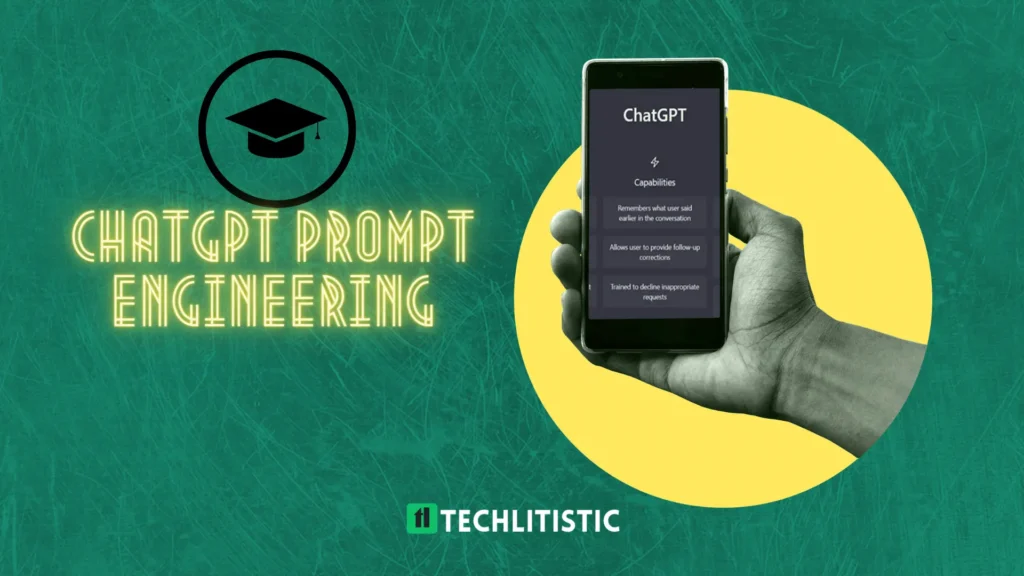
In the ever-evolving world of AI language models, ChatGPT stands out as a prominent player that has revolutionized natural language processing. As users explore the capabilities of ChatGPT, they quickly discover the crucial role of prompt engineering in harnessing the system’s true potential. This blog post will dive into prompt engineering, focusing on the intriguing and challenging topic of “ChatGPT Prompt Engineering” We will explore the fundamentals of ChatGPT, the different types of prompts, how to write effective prompts, how to troubleshoot prompt-related issues, and the latest trends in ChatGPT prompt engineering.
What is ChatGPT?
ChatGPT is a state-of-the-art language model developed by OpenAI, designed to interact with users conversationally. This model employs deep learning techniques, particularly transformer-based architectures, to process natural language and generate human-like responses. ChatGPT has been trained to produce coherent and contextually relevant answers by utilizing a vast amount of pre-existing text data.
How ChatGPT Works
At its core, ChatGPT works by predicting the next word or token in a sequence, given the input it receives. During inference, users provide prompts–textual snippets that guide the model’s responses. The model generates responses using the prompt to seed its understanding of the context. It then continues generating text based on the patterns it learned during training.
The Basics of ChatGPT Prompt Engineering
Prompt engineering is pivotal in controlling ChatGPT’s output and ensuring its responses align with the user’s intentions. In the context of “bad prompt embedding stable diffusion,” prompt engineering aims to address problems associated with prompt embeddings that lead to unstable and unreliable outputs.
Types of ChatGPT Prompts
Single-Shot Prompts: These are simple, one-sentence prompts that directly request the information or action desired from the model. For example, “Translate the following English text to French: ‘Hello, how are you?'”
Conversational Prompts: These prompts simulate a back-and-forth conversation with the model, creating a more interactive experience. For instance, “You are a helpful assistant. Please suggest three vegetarian pasta recipes.”
Conditional Prompts: These prompts provide the model with specific conditions to follow while generating a response. For example, “In 200 words, explain the impact of climate change on marine ecosystems.”
Writing Effective ChatGPT Prompts
Crafting effective prompts is essential to obtaining reliable and accurate responses from ChatGPT. Follow these guidelines to improve prompt quality:
Be Clear and specific: Clearly state your query or desired outcome in the prompt to minimize ambiguity.
Set the Context: Provide relevant context to the model, enabling it to understand the topic and generate contextually appropriate responses.
Experiment with Temperature: Adjusting the temperature parameter during inference influences the randomness of the model’s responses. Lower values (e.g., 0.2) yield more focused answers, while higher values (e.g., 0.8) produce more diverse responses.
Avoid Bias and Controversial topics: Avoid potential ethical issues when requesting responses on sensitive topics.
Troubleshooting ChatGPT Prompt Problems
Despite the benefits of prompt engineering, challenges may arise while using ChatGPT. Some common problems include:
Incoherent Output: ChatGPT may produce irrelevant or nonsensical responses if the prompt needs to be more clear and broad.
Prompt Sensitivity: Minor changes to the prompt can significantly impact the model’s responses.
Ethical Concerns: Users must be mindful of potential biases in the model’s responses and not use prompts that promote harmful content.
To address these issues, experiment with different prompts, adjust the temperature parameter, and carefully review the model’s responses before deploying them.
Latest Trends in ChatGPT Prompt Engineering
As AI researchers and engineers continue to explore the possibilities of prompt engineering, some emerging trends include:
Domain-Specific Prompting: Tailoring prompts for specific domains or industries allows ChatGPT to provide more accurate and specialised information.
Reinforcement Learning: Incorporating reinforcement learning techniques enables fine-tuning ChatGPT responses based on user feedback.
Prompt Engineering Tools: Developing tools and platforms that facilitate prompt engineering simplifies the process and encourages wider adoption.
Case Studies of ChatGPT Prompt Engineering
Let’s take a look at some real-world case studies to understand how prompt engineering can yield different outcomes:
Customer Support: A company using ChatGPT for customer support might employ a specific prompt like, “You are a customer support representative. Provide helpful and concise responses.” This encourages ChatGPT to generate useful replies without unnecessary fluff.
Creative Writing: For creative writing, a prompt like, “Write a story about a fantastical adventure in a magical land,” can inspire ChatGPT to craft imaginative narratives.
Benefits of Using ChatGPT Prompt Engineering
The benefits of incorporating prompt engineering techniques into ChatGPT usage are abundant:
Customization: Prompt engineering allows users to tailor ChatGPT’s behaviour according to specific needs and contexts.
Controlled Output: By providing clear prompts, users can guide the model’s output and avoid undesirable results.
Efficiency: Well-designed prompts help ChatGPT generate more relevant responses, saving time and resources.
Enhanced User Experience: Effective, prompt engineering leads to improved user interactions, making the AI more useful and engaging.
Conclusion
Prompt engineering is the key to unlocking the full potential of ChatGPT, allowing users to interact effectively with the model and obtain contextually relevant responses. By understanding the significance of prompt design, users can avoid “bad prompt embedding stable diffusion” and harness the power of ChatGPT for various applications. Remember to write clear, specific prompts, experiment with different techniques, and be aware of ethical considerations while engaging with this revolutionary language model. As AI evolves, staying up-to-date with the latest trends in prompt engineering will yield more impressive and insightful results.
for more related topics
